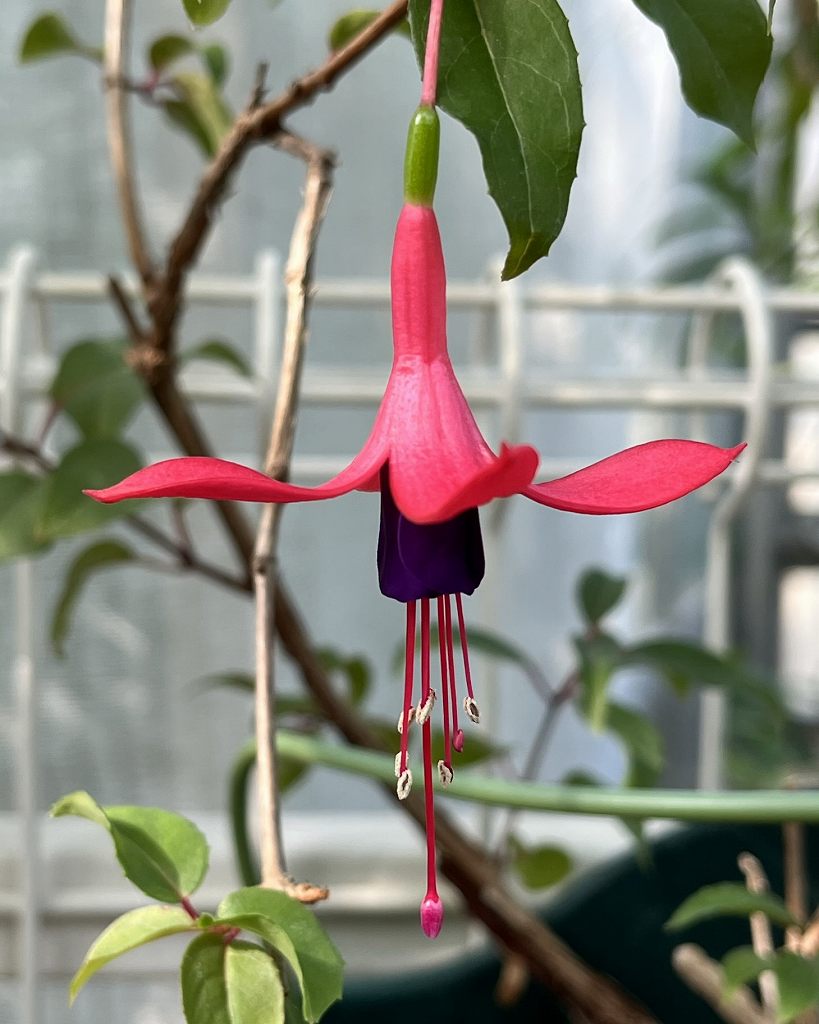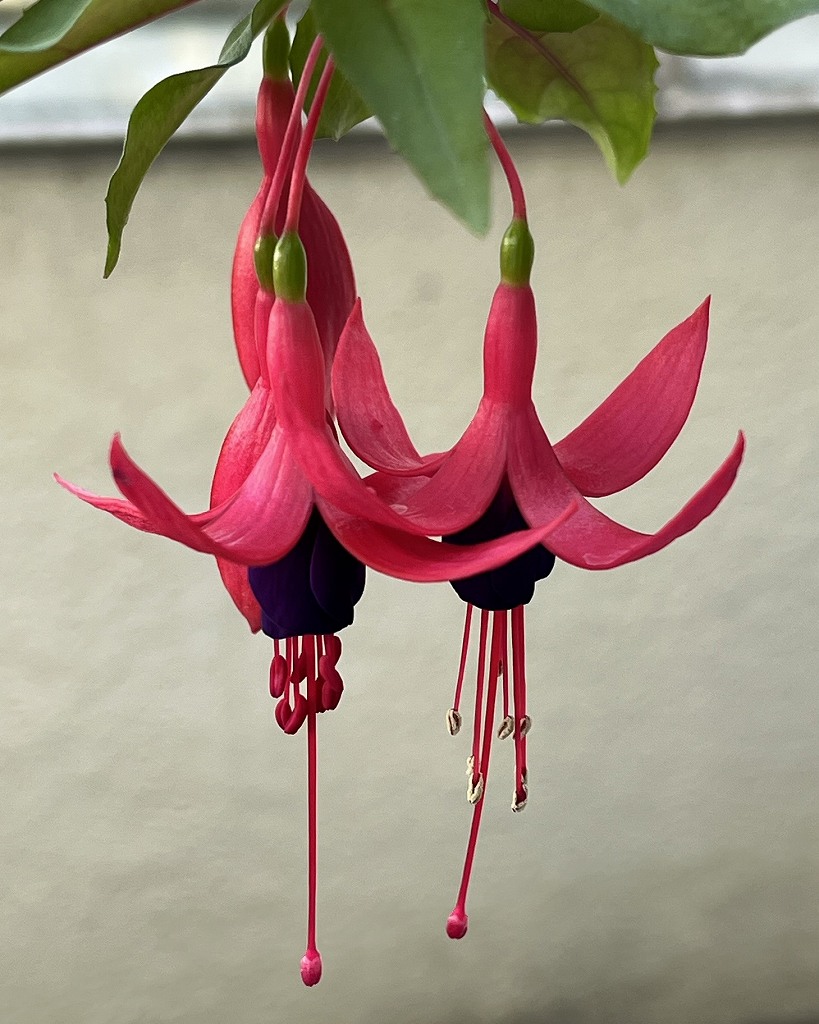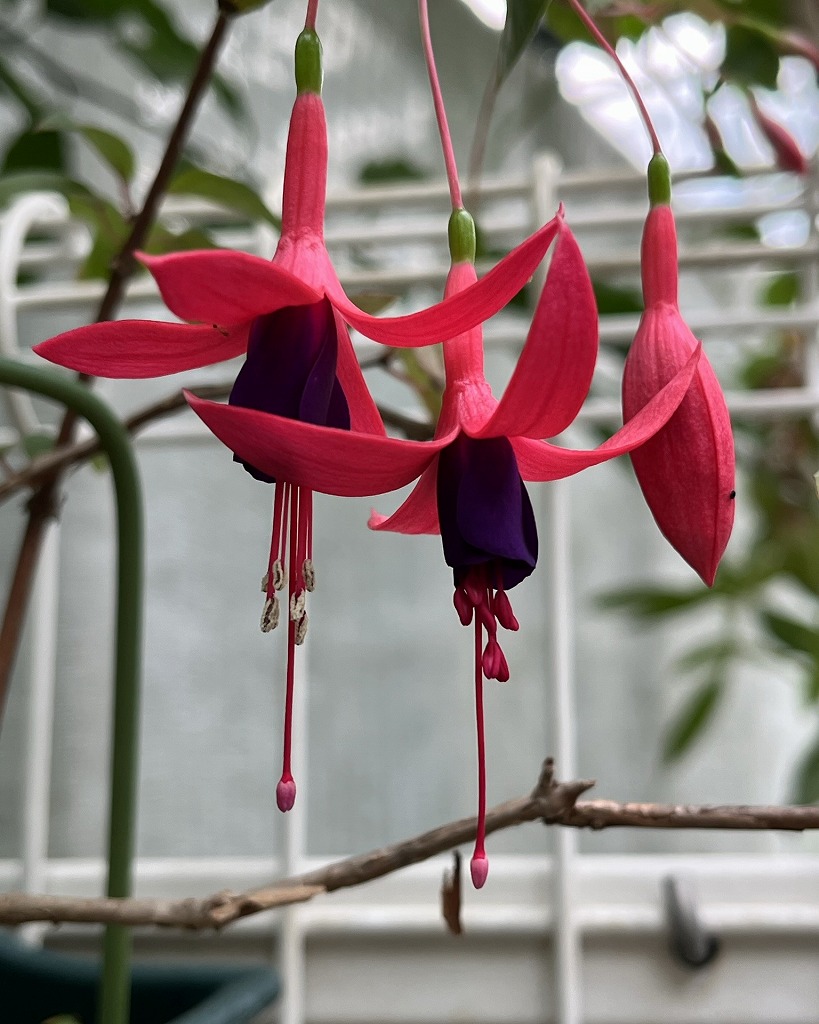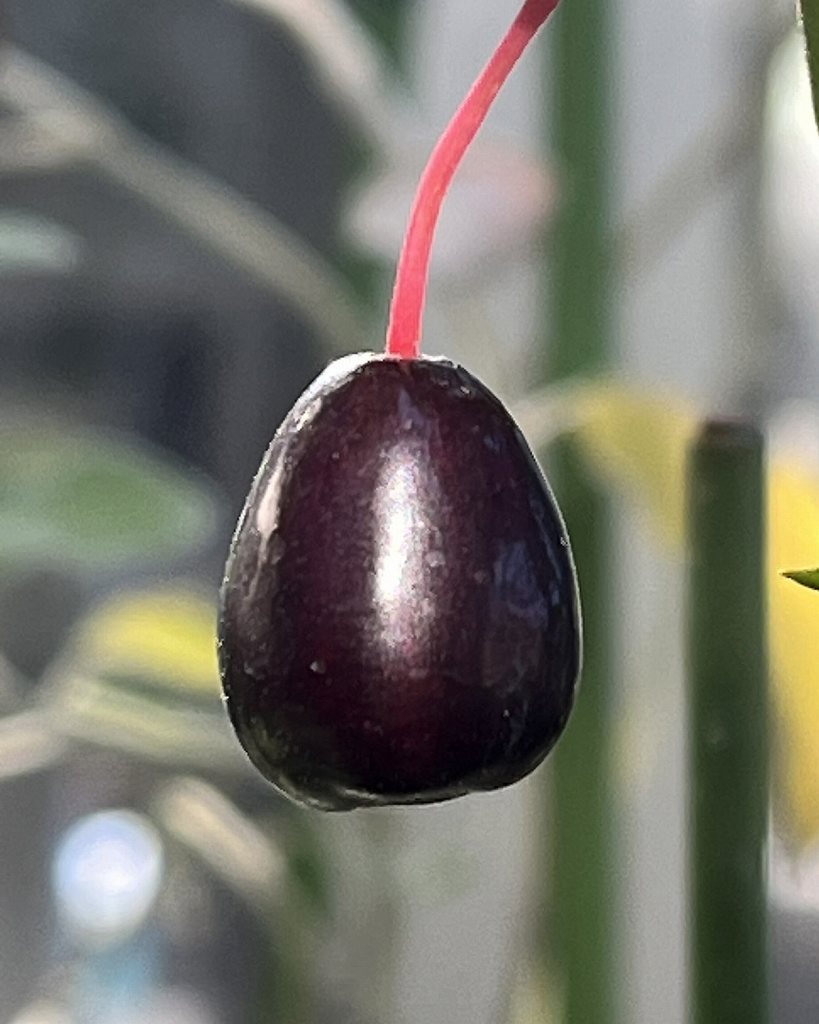フクシアは鮮やかな花色で色名にもなり、マゼンタと同じ赤紫色を表します。英名レディス・イヤドロップスは「淑女の耳飾り」という意味。
Fuchsia is a flower with a vibrant color, so it has also become a name that describes its color. It has the same reddish purple color as magenta. It is also known in English as “Lady’s Eardrops.”
【仮名】フクシア, ツリウキソウ
【和名】釣浮草
【英名】Fuchsia, Lady’s Eardrops
【学名】Fuchsia hybrida
【誕生】01/ 25, 05/ 17, 05/ 22, 07/ 11, 07/ 31
【開花】05, 06, 07月
【花色】White, Pink, Red, Purple
フクシア
フクシアの概要

フクシアはアカバナ科の低木。原産地は中南米の熱帯~亜熱帯地域です。欧米で多くの園芸改良種が育成され、日本へは江戸時代の末期に渡来。鮮やかな花色によって花名が色名にもなり、マゼンタと同じ赤紫色を表します。花言葉は花の様子から「慎ましい愛」「お洒落な人」など。
フクシアの名前

フクシアの名前の由来はラテン語の属名で、16世紀のドイツで植物学者でもあった医師レオンハルト・フックスへの献名。種小名ハイブリダは「雑種」という意味です。和名の釣浮草は花が釣りの浮きのようだから。英名レディス・イヤドロップスは「淑女の耳飾り」という意味です。
フクシアの姿形

フクシアの葉は披針形で対生または輪生します。花は下を向いて垂れ、外花被が反り返った大きな萼片で4枚、内花被が筒状の小さな花弁で4枚。雄しべ8本と雌しべ1本が突出し、ハチドリが花粉を媒介します。花後は卵形の液果を形成。小さな種子を多く含むものの食べられます。
フクシアの種類

フクシアは一重咲きから八重咲きまで、小輪種から大輪種まで多様ですが、夏が涼しい欧州で育成された八重咲きの大輪種は日本の蒸し暑い夏が苦手。一方、日本で育成された「エンジェルス・イヤリング」や、トリフィラ種から育成された系統は暑さに強く、育てやすい品種群です。
Fuchsia

Fuchsia is a shrub of the Onagraceae family. It is native to the tropical and subtropical regions of Central and South America. Many horticultural varieties have been developed in Europe and the United States, and were introduced to Japan at the end of the Edo period. The flower color is vivid, so the name also describes the color. It represents the same reddish purple color as magenta. The flower’s meaning is “modest love” and “fashionable person” based on the appearance of the flower.
The name Fuchsia is the Latin genus name. It is a tribute to Leonhart Fuchs, a 16th century German botanist and doctor. The specific name hybrida means “hybrid”. The Japanese name means “fishing float” and comes from the shape of the flower. It also has the English name “Lady’s Eardrops”.
Fuchsia leaves are lanceolate and grow in opposite or whorls. The flowers hang downward, with four large, curled sepals on the outer perianth and four small, tubular petals on the inner perianth. It has eight stamens and one pistil, and is pollinated by hummingbirds. After flowering, it forms an egg-shaped berry, which is edible but contains many small seeds.
Fuchsia comes in a variety of varieties, from single to double flowers, and from small to large. However, the large double-flowered varieties bred in Europe, where the summers are cool, do not do well in Japan’s hot and humid summers. On the other hand, the “Angel’s Earing Series” bred in Japan and the strains bred from the Triphylla Type are heat-resistant and easy to grow.


